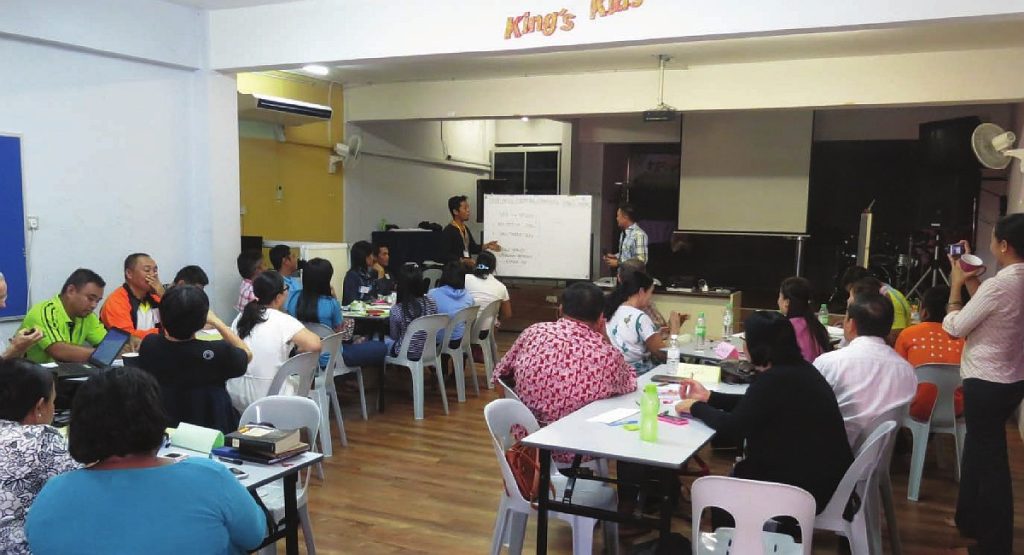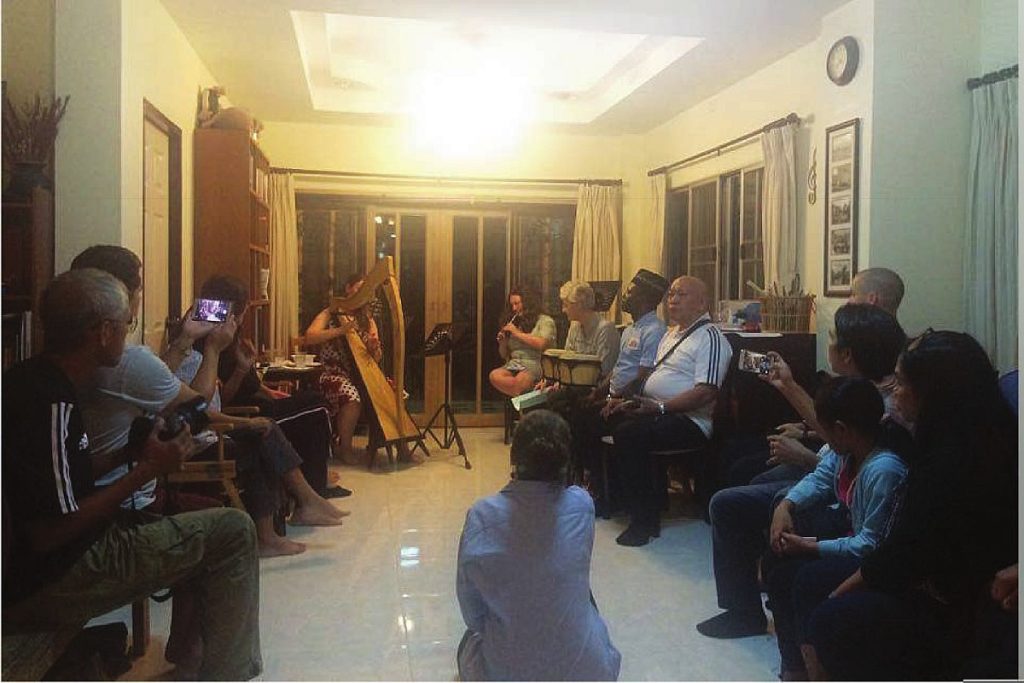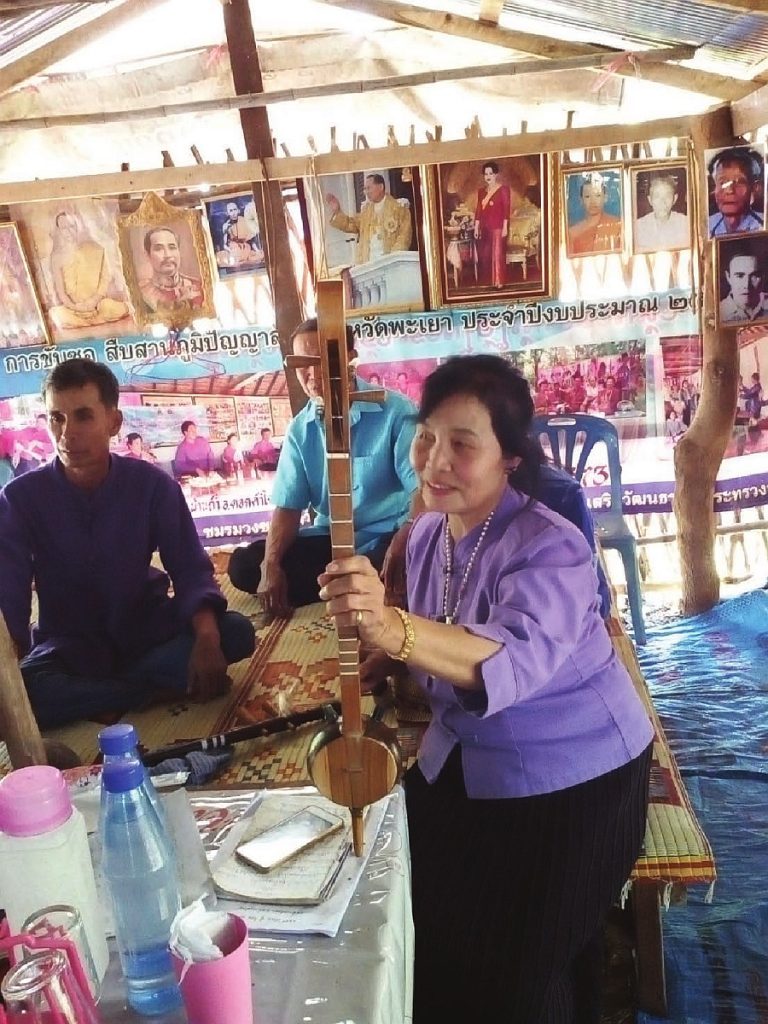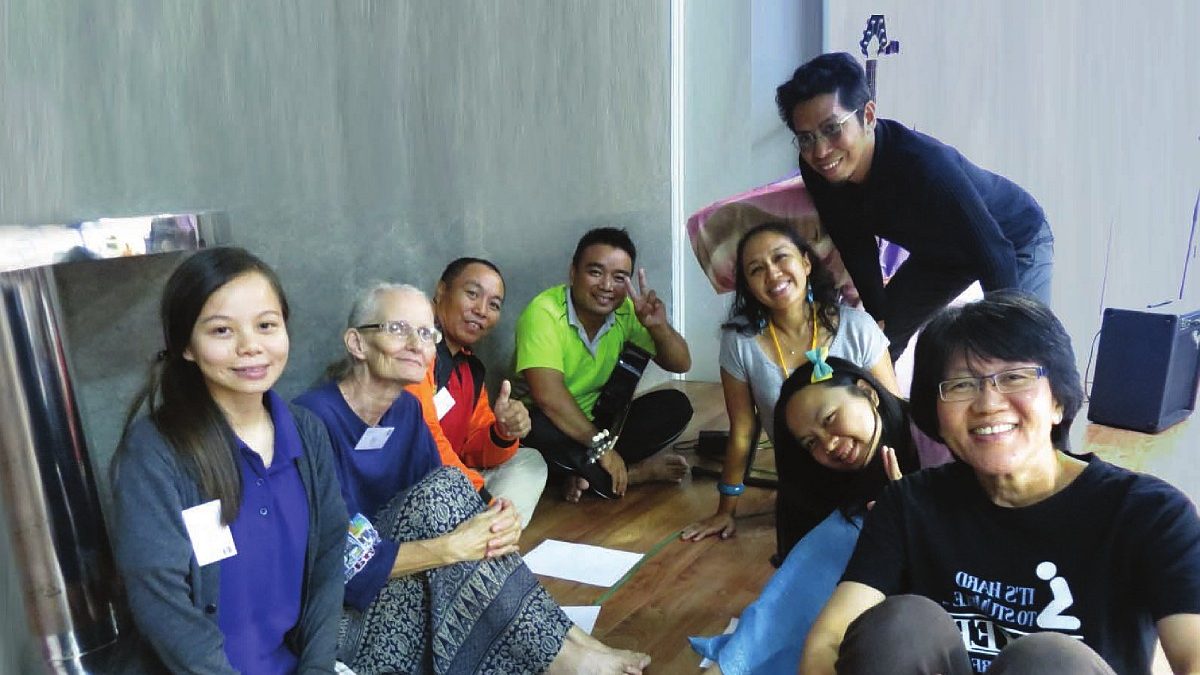In January 2016, I attended an EthnoArts songwriting workshop led by 3 facilitators from the Philippines. What really excited and touched me was when I saw how the 5 different ethnic groups working together to create worship songs in their mother tongue and presenting the songs to the class. The experience from this workshop motivated me to attend the ‘Basic Principles of Ethnomusicology and Arts’ Course held in June of the same year.
WHAT IS ARTISTIC EXPRESSION?
Artistic Expression is best explained through my experiences. In my final assignment on Basic Principles of ‘Artistic Expression’, we were asked to express what we have learnt artistically. I chose the picture of a detective holding a magnifying glass to show that whenever we involve ourselves in EthnoArts activities, we should have an inquisitive attitude, i.e. to ask:
WHY WHAT WHEN WHERE WHICH HOW
Later, while attending the Applied EthnoArts course in Chiang Mai, I was challenged to use my creativity to express my art. I chose an equilateral triangle and a heart shape representing Jesus, with black as the background colour, meaning “our days on earth are but a shadow.” (Job 8:9) Jesus performed miracles out of His love for people. He used five loaves of bread and two fish to feed five thousand people. But the souls that are touched by Jesus are countless, are invisible to the naked eye. “For what is seen is temporary, but what is unseen is eternal.” (2 Corinthians 4:18)
I realized when we are learning, recognizing and appreciating the richness of the local arts of the ethnic groups, it is in fact a process of building a “sense of belonging” and a deepening of our awareness of who we are. In other words, it is a process of learning and knowing our identity. Let us imagine that you are away from your hometown for the first time, and among a group of people made up of different ethnic groups, speaking different languages and dialects. How would you react in this situation? Due to our past experiences, our inclination would be to find people who speak the same language or dialect, or someone who is from the same area or region. In other words, we tend to find people who have the same identity as ours because it makes us feel secure, comfortable and safe. This is what we call a “sense of belonging”.

For example, how do you know that you are a Chinese, Iban, Malay, Indian or any other ethnic group? Is it not the language that we speak? Is it not the name that we bear? Is it not the food that we eat, the celebrations and seasons or practices that we observe every year?
There is a saying that goes like this: “Language and Culture are the soul of a nation”, if a nation loses her language and culture, she loses her soul.
Sue Monk Kidd, an American novelist, once said: “Stories have to be told or they die, and when they die, we can’t remember who we are or why we are here.” What is described here is the ‘oral tradition’ which is one of the EthnoArts, such as folk tales, fables, riddles, poems, and so on.
In my past fifteen years serving a people group in South East Asia, I realized that the people group that I’m serving has inherited their wealth and embraced a treasure which is hidden in their traditional culture. It is their EthnoArts, embedded in their oral tradition, costumes, handicraft, music, dance, local food, etc. There are currently five schools in different villages conducting courses in mother tongue education. Teachers were trained to use their mother tongue to communicate with children. They use the mother tongue as a medium to teach these children between ages three to four in order to understand their own culture and art. There is a Chinese saying: “Three years old fixes lifelong”; and three to four years old is the best time for children to learn languages. The preservation and continuation of the mother tongue is important and crucial for recognizing one’s identity and self-worth.
A sociolinguist, Paul Lewis views the arts (Ethno Arts) as essential to the identity, social relations, and worship of these indigenized forms of Christianity.
“The Arts provide a way for us to value and celebrate the diversity that God has created in the nations. the picture of “every tribe and tongue and nation” (Revelation 7:9) worshiping around the throne is not just a celebration of linguistic diversity (a sort of eternal multilingual Scripture reading session) – it is, I think, a celebration of the wonder and creativity of God’s greatest creation (humankind) through their Arts. I expect we won’t just be singing solemnly in our own language but dancing, drawing, dramatizing and probably even juggling – each according to our own culture and identity.”
– Paul Lewis –
IDENTITY AND MISSION – OUR IDENTITY IN CHRIST

When we talk about this topic, Identity and Mission, we have the best and perfect example, i.e. the Son of God, our Lord Jesus Christ, who is the Word became flesh, and He Himself is a great missionary. “The Word became flesh and made His dwelling among us. We have seen His glory, the glory of the One and Only, Who came from the Father, full of grace and truth.” (John 1:14)
Jesus was born into the Jewish community and culture and He also observed their customary laws. For example, He was circumcised on the eighth day after His birth (Luke 2:21) and it is like the Chinese celebrating the birth of a new born child after one month. When He was twelve years old, He went to Jerusalem with His parents for the Feast of the Passover. (Luke 2:41-42) Similarly, we celebrate the Chinese New Year every year. Although it is not told in the Gospel of Luke how Jesus obeyed all the law and practices, however, from Luke 2:51: “Then He went down to Nazareth with them and was obedient to them.” we could imagine that He followed each and every customary law commanded by His parents.

Because of the Lord Jesus, today each of us, apart from having the same identity with our own ethnic people group, has a new identity in Christ. When we believed in the name of Jesus Christ and accepted Him as our Savior, we have a special identity and mission in Christ. 1 Peter 2:9 describes it in this way: “But you are a chosen people, a royal priesthood, a holy nation, a people belonging to God, that you may declare the praises of Him who called you out of darkness into His wonderful light.”
Finally, do not forget the Great Commission from our Lord Jesus Christ before He ascended to heaven. Then Jesus came to them and said, “All authority in heaven and on earth has been given to me. Therefore go and make disciples of all nations, baptizing them in the name of the Father and of the Son and of the Holy Spirit, and teaching them to obey everything I have commanded you. And surely I am with you always, to the very end of the age.” (Matthew 28:18-20)
LAST BUT NOT LEAST – “LISTENING”
I believe that it is not by chance, but according to His plan and purpose in my life that God placed this interest and burden of “EthnoArts” in my heart. There is one thing worth mentioning here is that before I went to Chiang Mai for the Applied EthnoArts course last year, I attended a three-day silent retreat. When I put both the “Silent Retreat” and “EthnoArts Course” together, I found similarities between the two: “listening”. Only the objective and methods are different. For the former, we are listening to God, silently and quietly. For the latter, we are listening to the people, to whom we serve, by means of facilitating. What we want to listen for, is their voices, to draw out their felt needs, whether it is spoken or silent. For me, this is holistic vision and mission!



